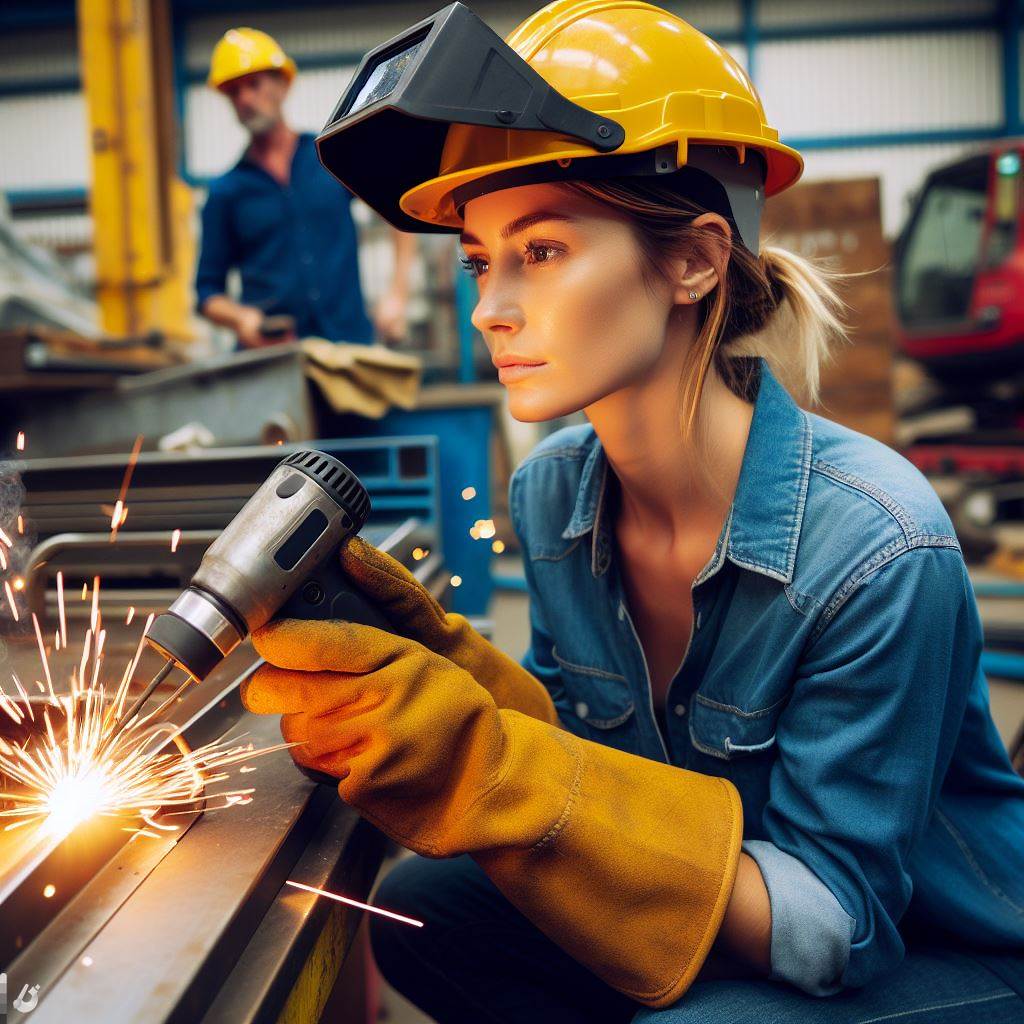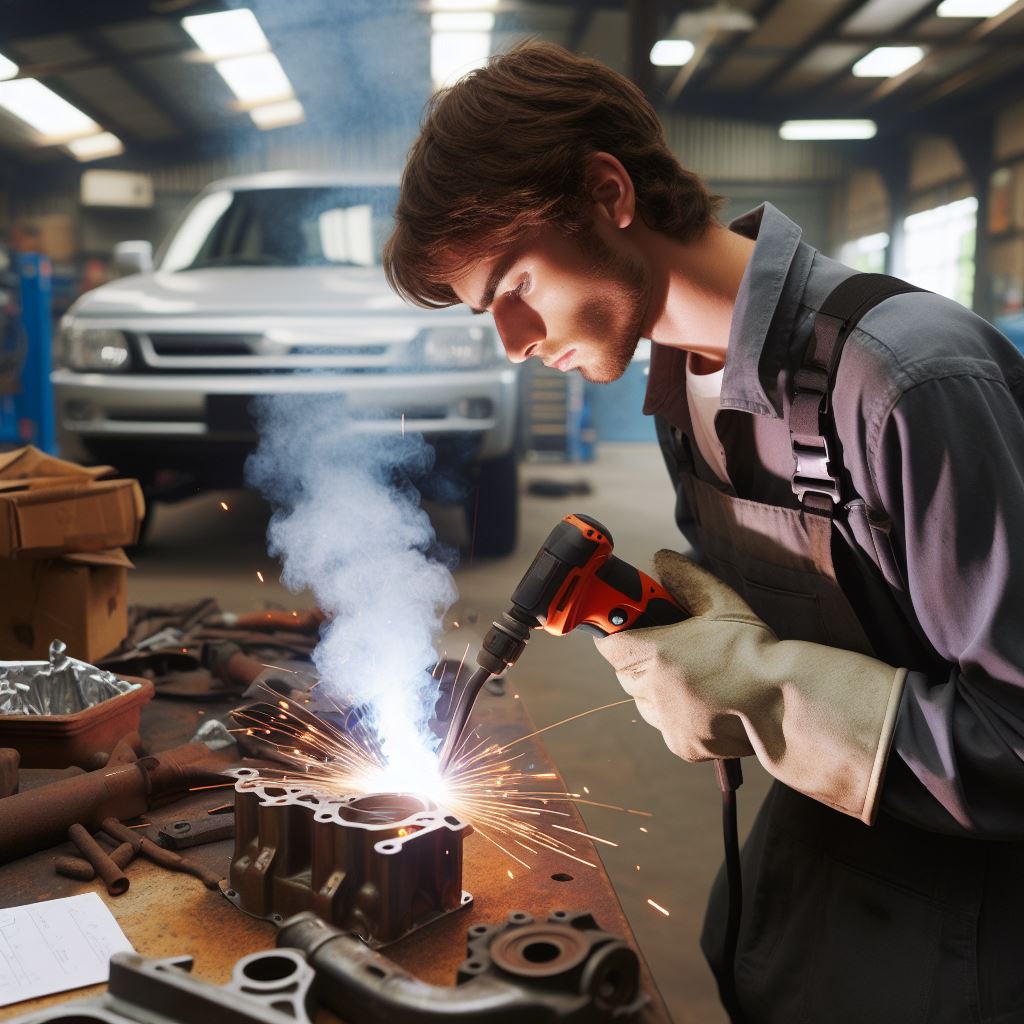Introduction
Women in Welding: Encouraging gender diversity in a traditionally male-dominated field.
Exploring the growing presence of women in the welding industry in Australia.
This blog post aims to shed light on the changing dynamics and opportunities for women in welding.
Women in Welding: Changing Face in Australia
In recent years, the field of welding in Australia has undergone a significant transformation.
Traditionally dominated by men, there has been a notable rise in the number of women entering this industry. This change, driven by various factors, has led to a shift in the face of welding in Australia.
changing the face of the industry in Australia
The increasing presence of women in welding is a result of both societal and economic changes.
As gender inequality and discrimination continue to be challenged, women are breaking barriers and pursuing careers in previously male-dominated fields such as welding.
Additionally, with the demand for skilled welders on the rise, the industry is actively seeking a diverse workforce, including women.
Purpose of the blog post
The purpose of this blog post is to highlight the experiences, achievements, and challenges faced by women in welding.
By sharing these stories, we aim to inspire and encourage more women to consider a career in welding, debunking outdated stereotypes and embracing the untapped potential of women in this field.
In the following sections, we will explore the journeys of successful women welders in Australia, delve into the initiatives and support networks available to women in the welding industry, and discuss the benefits of a diverse workforce in welding.
Through these insights, we hope to foster a deeper understanding of the changing face of welding in Australia and open doors for more women to embark on rewarding careers in this field.
Stay tuned for our next section, where we introduce some remarkable women who have defied conventions and made their mark in the world of welding.
Historical perspective of welding as a male-dominated field
Overview of welding as a traditionally male-dominated profession
- Welding has long been considered a male-dominated field, primarily attracting men in the past.
- The perception of welding as a physically demanding job has made it less appealing to women historically.
- Stereotypes around welding being dirty, dangerous, and requiring brute strength have discouraged female participation.
- The lack of female role models and limited representation of women in welding further reinforced the gender divide.
Factors contributing to the exclusion of women in welding
- One of the significant factors leading to the exclusion of women in welding is societal expectations and gender norms.
- Traditional gender roles have dictated that welding is a job more suited for men, limiting women’s opportunities.
- Lack of access to training and education programs specifically targeted towards women in welding.
- Discrimination and bias in recruitment, promotion, and work environments have discouraged female participation.
- Unconscious biases and stereotypes held by employers and coworkers have perpetuated the underrepresentation of women.
Statistics showcasing the gender imbalance in the industry
- According to industry data, women make up only a small percentage of the welding workforce in Australia.
- The Australian Bureau of Statistics reports that women account for approximately 3% of the total welding workforce.
- Female representation decreases even further when considering higher-skilled roles or leadership positions in welding.
- The gender imbalance in welding is not unique to Australia but is a global phenomenon in the industry.
- Efforts to address the gender gap in welding have been made, but progress has been slow.
Overall, the historical perspective of welding as a male-dominated field highlights the challenges women have faced in entering and advancing in the profession.
Stereotypes, gender norms, limited opportunities, and biases have all contributed to the exclusion of women in welding.
However, with increasing efforts to promote gender diversity and create inclusive environments, there is hope for a more balanced representation of women in the industry.
It is crucial to challenge traditional perceptions, provide equal access to training and opportunities, and foster a supportive and inclusive culture to encourage more women to pursue careers in welding.
Breaking barriers: Women entering the welding industry
Examples of successful women welders in Australia
- Samantha Johnson, a renowned welder, has been recognized for her exceptional skills and craftsmanship.
- Emma Lee is another inspiring figure, known for her expertise in welding stainless steel structures.
- Rachel Turner has achieved great success in the field of underwater welding, breaking gender stereotypes.
Initiatives and programs promoting gender diversity in welding
- The “Women in Welding” program, initiated by the Australian Welding Institute, provides support and networking opportunities for women in the industry.
- The Australian government has launched grants and scholarships specifically for women pursuing welding careers.
- Welding companies are actively implementing diversity policies and creating inclusive work environments.
Challenges faced by women entering the welding sector – stereotypes, lack of support, etc.
- Stereotypes: Women face the misconception that welding is a male-dominated field, leading to skepticism and bias.
- Lack of support: Limited access to training programs, mentorship, and scholarships hinders women’s progress in welding.
- Physical demands: The physically demanding nature of welding can be a challenge for some women, but with proper training and support, they can overcome it.
- Work-life balance: Balancing family responsibilities with welding careers is a significant challenge for women, requiring a supportive workplace culture.
Breaking these barriers is crucial to ensure gender diversity in the welding industry. The success stories of women welders in Australia serve as inspiration for aspiring female welders.
Initiatives and programs, such as the “Women in Welding” program and government grants, are paving the way for equal opportunities.
However, challenges persist, including stereotypes, lack of support, physical demands, and work-life balance.
Overcoming these obstacles requires collaborative efforts from individuals, organizations, and the welding community as a whole.
By encouraging and nurturing female talent in welding, we can create a more diverse and inclusive industry.
Providing equal opportunities and resources to women will not only benefit their individual careers but also contribute to innovation and growth in the welding sector.
Let us break the barriers and embrace the changing face of women in welding in Australia.
Find Out More: Water-Smart Landscapes in Australia
The benefits of gender diversity in welding
The positive impact of women’s participation in the field
- Women bring unique perspectives and experiences to the welding industry.
- Inclusion of women in welding promotes diversity and breaks gender stereotypes.
- Women’s participation in welding challenges traditional notions of what jobs are suitable for men or women.
- Having females in the field encourages more women to consider welding as a career option.
Increased creativity, problem-solving, and innovation:
- Gender diversity fosters a broader range of ideas and approaches to problem-solving.
- Women often bring fresh perspectives and different ways of thinking to welding projects.
- Having both men and women working together leads to more innovative and effective solutions.
Improved work environment and team dynamics
- Gender diversity in welding creates a more inclusive and supportive work environment for all.
- Women contribute to a positive workplace culture by promoting teamwork and collaboration.
- Men and women working together in welding teams foster better communication and understanding.
- Increased gender diversity leads to improved teamwork, respect, and cooperation among workers.
Economic benefits for the industry
- Increased gender diversity in welding can help address the skilled labor shortage in the industry.
- By tapping into the full talent pool, the industry can access a wider range of skills and abilities.
- Women bring valuable skills to welding, such as attention to detail and fine motor skills.
- Having more women in welding can contribute to increased productivity and overall economic growth.
In review, gender diversity in welding brings numerous benefits to the industry. Women’s participation challenges stereotypes, promotes creativity, improves team dynamics, and contributes to economic growth.
By fostering a more inclusive environment, the welding industry can thrive and ensure the full potential of all workers is utilized.
Read: Top Plumbing Trends in Australian Engineering

Find Out More: Australian Climate and Landscape Design
Overcoming challenges and empowering women in welding
Steps that can be taken to encourage and support women in welding
- Create awareness campaigns to showcase the opportunities and benefits of a career in welding.
- Implement outreach programs in schools to introduce girls to welding at a young age.
- Offer scholarships and financial assistance to female interested in pursuing welding training.
- Provide mentorship programs where experienced women welders can guide and inspire newcomers.
- Establish support networks and professional organizations for female in the welding industry.
Important role of mentorship and networking opportunities
- Mentorship programs can provide guidance and support for women welders, helping them navigate challenges and advance in their careers.
- Networking opportunities allow women welders to connect with industry professionals, access job openings, and foster professional relationships.
- Mentorship and networking create a sense of community, empowering female in welding by providing a support system.
Ensuring equal opportunities for training and career growth
- Eliminate gender biases in recruitment and hiring processes within the welding industry.
- Develop and implement diversity and inclusion policies to ensure equal opportunities for women in training programs.
- Provide ongoing professional development opportunities to enhance skills and support career advancement for women welders.
- Offer leadership training programs specifically tailored for female in welding.
- Promote a culture of inclusivity and respect within welding workplaces to attract and retain talented women.
Celebrating the achievements of women in welding
- Organize recognition events and award ceremonies to honor the accomplishments of women welders.
- Highlight success stories and share them through media platforms to inspire other women.
- Feature women welders in industry publications, websites, and social media to showcase their skills and expertise.
- Collaborate with educational institutions and industry partners to host conferences and workshops focused on women in welding.
By taking these steps, we can empower women in welding, create a more diverse and inclusive industry, and pave the way for a brighter future for aspiring women welders in Australia.
Read: Plumbing 101: A Beginner’s Guide in Australia
Your Personalized Career Strategy
Unlock your potential with tailored career consulting. Get clear, actionable steps designed for your success. Start now!
Get StartedSee Related Content: Carpentry 101: An Aussie’s Guide to the Trade
Conclusion
The welding industry in Australia has seen significant changes in terms of gender diversity.
Women who are interested in pursuing a career in welding should feel encouraged to do so.
The future of gender diversity in welding looks promising, with more female expected to enter the field.
In closing, female are reshaping the landscape of welding in Australia, bringing diversity and innovation.
Their active participation signals a positive shift, challenging stereotypes and contributing to a more inclusive and dynamic industry.
As the face of welding transforms, the opportunities for collaboration and advancements grow.
It’s evident that women welders are not just breaking barriers but also forging new paths in a traditionally male-dominated field.
The lastly is clear: the future of welding in Australia is brighter and more progressive with the active involvement of women.
Embracing this change fosters a stronger, more resilient welding community that thrives on equality and shared expertise.
The evolving narrative of female in welding reflects not only their individual success but also the collective success of an industry moving towards equality and recognition for all.




